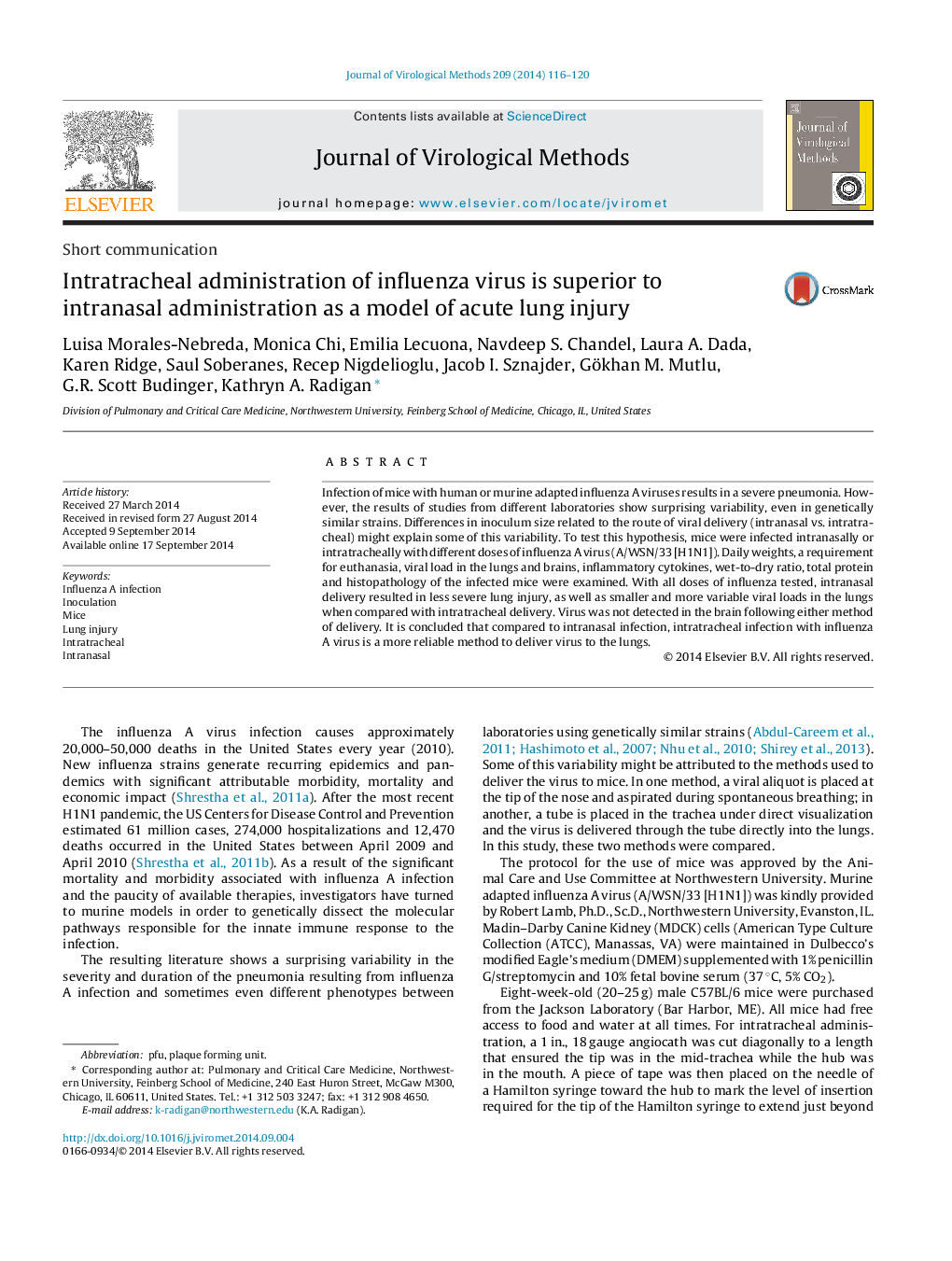| Article ID | Journal | Published Year | Pages | File Type |
|---|---|---|---|---|
| 6133482 | Journal of Virological Methods | 2014 | 5 Pages |
Abstract
Infection of mice with human or murine adapted influenza A viruses results in a severe pneumonia. However, the results of studies from different laboratories show surprising variability, even in genetically similar strains. Differences in inoculum size related to the route of viral delivery (intranasal vs. intratracheal) might explain some of this variability. To test this hypothesis, mice were infected intranasally or intratracheally with different doses of influenza A virus (A/WSN/33 [H1N1]). Daily weights, a requirement for euthanasia, viral load in the lungs and brains, inflammatory cytokines, wet-to-dry ratio, total protein and histopathology of the infected mice were examined. With all doses of influenza tested, intranasal delivery resulted in less severe lung injury, as well as smaller and more variable viral loads in the lungs when compared with intratracheal delivery. Virus was not detected in the brain following either method of delivery. It is concluded that compared to intranasal infection, intratracheal infection with influenza A virus is a more reliable method to deliver virus to the lungs.
Keywords
Related Topics
Life Sciences
Immunology and Microbiology
Virology
Authors
Luisa Morales-Nebreda, Monica Chi, Emilia Lecuona, Navdeep S. Chandel, Laura A. Dada, Karen Ridge, Saul Soberanes, Recep Nigdelioglu, Jacob I. Sznajder, Gökhan M. Mutlu, G.R. Scott Budinger, Kathryn A. Radigan,
